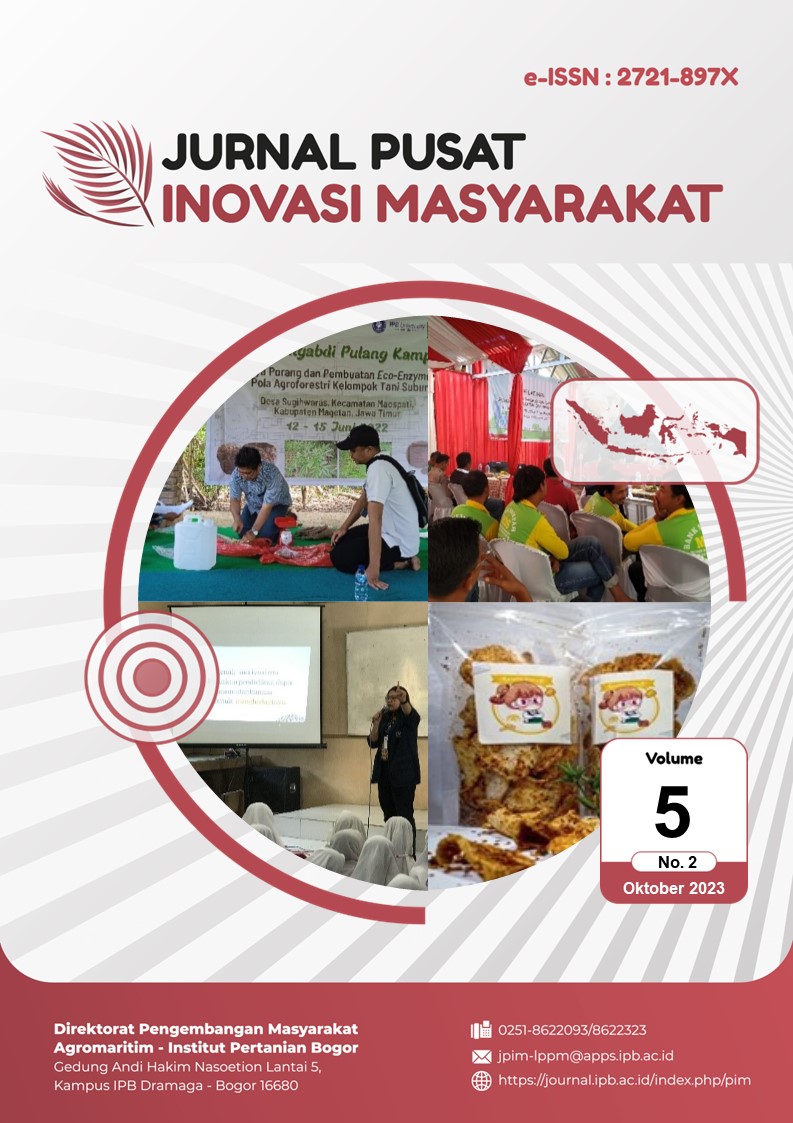Sosialisasi Pemanfaatan Limbah Organik Rumah Tangga Menjadi Pupuk Organik Cair dalam Kegiatan KKN-T di Kampung Rarahan, Cimacan, Cipanas
Abstract
Kampung Rarahan is one of the hamlets in Cimacan Village, Cipanas District, Cianjur Regency. One of the common problems in Cimacan Village, especially in this hamlet, is related to waste management, which still needs to be improved. This socialization and demonstration program for making liquid organic fertilizer aims to provide knowledge to the people of Rarahan Hamlet regarding the separation of organic and inorganic waste, as well as providing appropriate innovations in the form of making liquid organic fertilizer from household organic waste, easy to practice and of economic value. This socialization program is expected to overcome the waste problem in Kampung Rarahan. The activities carried out in Rarahan Hamlet included materials discussion sessions, followed by direct demonstrations of making organic fertilizer with representatives of farmers and homemakers. The results of making liquid organic fertilizer from household organic waste with the help of the EM4 bioactivator show good quality, as seen from the brownish-yellow color and the characteristic sour aroma of fermentation. On the surface of the fertilizer, there is a white layer, a type of fungus that grows after the formation of the fertilizer.
Downloads
References
Moerdjoko S, Widyatmoko. 2002. Menghindari, Mengolah dan Menyingkirkan Sampah, Cet.1. Jakarta (ID): PT. Dinastindo Adiperkasa Internasional.
Nur T, Noor AR, Elma M. 2016. Pembuatan pupuk organik cair dari sampah organik rumah tangga dengan bioaktivator EM4 (Effective Microorganisms). Jurnal Konversi. 5(2): 44-51. https://doi.org/10.20527/k.v5i2.4766
Sundari E, Sari E, Rinaldo R. 2012. Pembuatan pupuk organik cair menggunakan bioaktivator biosca dan EM4. Prosiding SNTK Topi 2012. Pekanbaru: 11 Juli 2012. Hal. 93-97.
Zurhaini, Jannah W, Hadi T. 2020. Pengolahan sampah organik rumah tangga menjadi pupuk organik cair. Indonesian Journal of Engineering. 1(1): 46-59.












